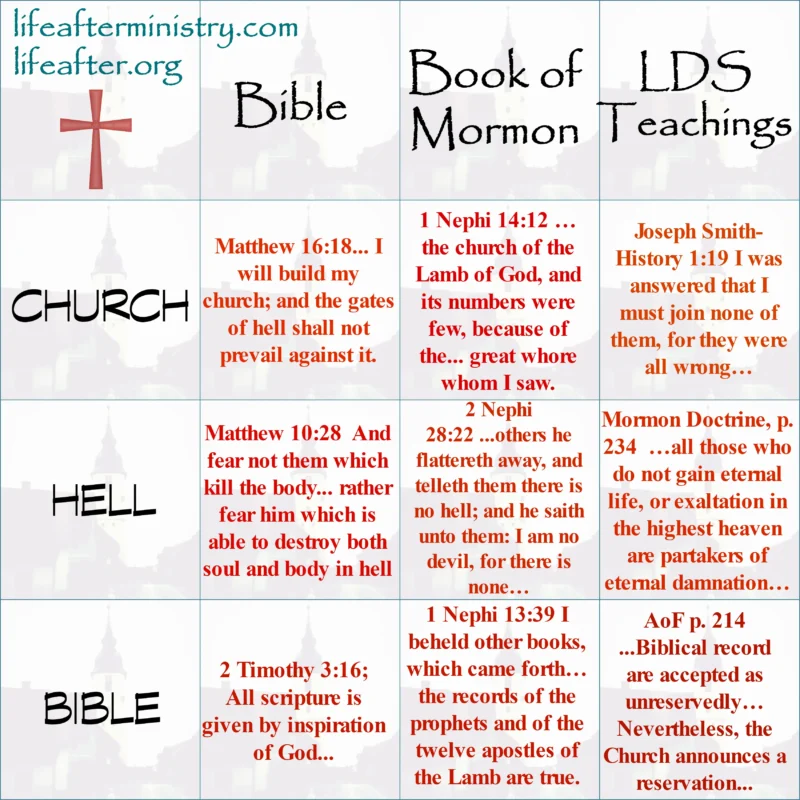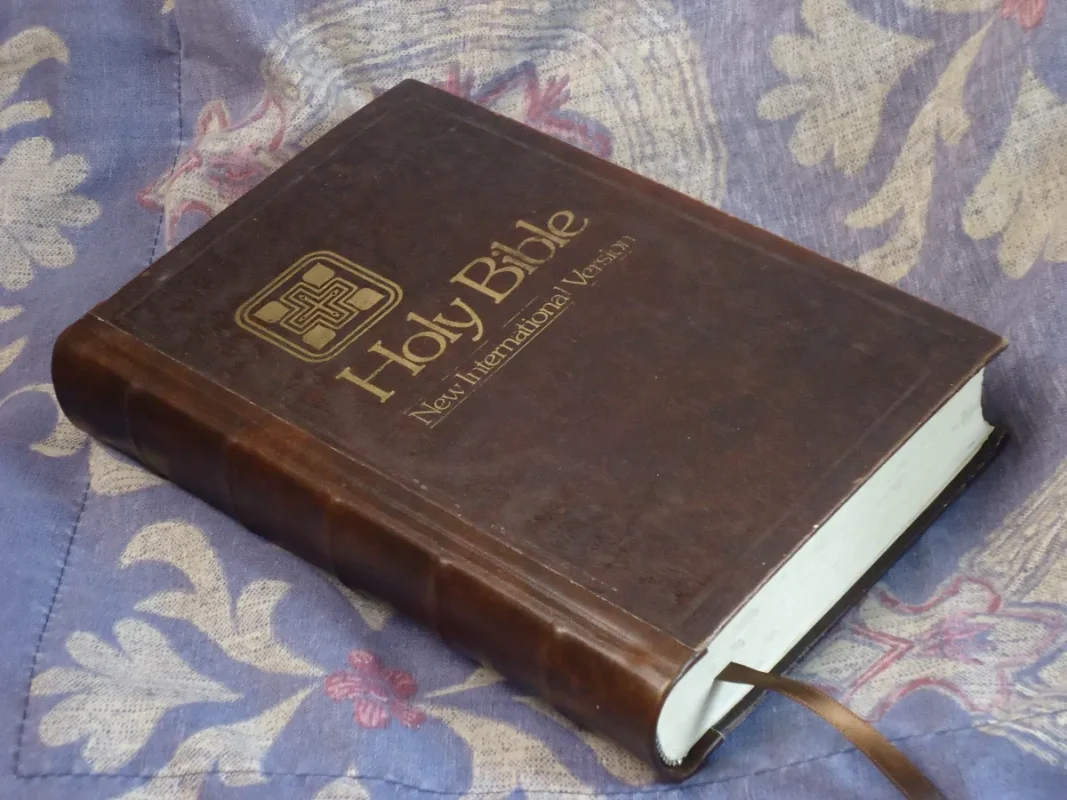The Book of Revelation is full of strange and puzzling symbols. Many readers find it hard to grasp the meaning behind these vivid images. But these symbols hold deep truths about God’s plan for the world.


The symbols in Revelation point to big ideas like good vs. evil, judgment, and hope for the future. Things like beasts, trumpets, and numbers all have special meanings. They paint a picture of how God will make all things right in the end.
Learning about these symbols can help us better understand this complex book. It lets us see the big picture of what God wants to tell us through Revelation.
Key Takeaways
- Revelation uses many symbols to share God’s message about the future
- The symbols show a cosmic battle between good and evil
- Understanding the symbols helps unlock the book’s deeper meanings
Historical and Literary Context

The Book of Revelation has deep roots in history and literature. It draws on ancient traditions and was written during a time of great change. The book’s style and message were shaped by its author and the people it was meant for.
Origins of Apocalyptic Literature
Apocalyptic literature has a long history in Jewish and Christian writings. It often uses symbols to talk about the end times. This type of writing became popular during times of trouble.
The Old Testament has books like Daniel that use similar ideas. These books helped shape how Revelation was written. They use dreams and visions to share their message.
Revelation fits into this tradition but adds new twists. It blends Old Testament themes with Christian beliefs. This mix makes it unique among religious texts.
Authorship and Audience
The Book of Revelation is said to be written by John. Many think this is the same John who wrote the Gospel. He wrote for Christians living in Asia Minor, which is now Turkey.
These Christians faced hard times. The Roman Empire was not always kind to them. John wanted to give them hope and courage.
He used code words and symbols that his readers would understand. This kept the message safe from Roman eyes. It also made the book exciting to read.
The Writing From Patmos
John wrote Revelation while on the island of Patmos. He was sent there as punishment for his faith. This small Greek island became the birthplace of one of the most famous books in the Bible.
On Patmos, John had visions of Jesus and the future. He wrote these down in vivid detail. The island’s isolation may have helped John focus on his spiritual experiences.

The rocky landscape of Patmos might have inspired some of the book’s imagery. John’s time there shaped the powerful message he shared with his fellow believers.
Diving Into Symbolism
The Book of Revelation uses rich symbols to convey deep truths. These symbols often have layers of meaning. Numbers also play a key role in the book’s message.
Interpreting Symbols
Symbols in Revelation can be tricky to understand. They often point to bigger ideas or events. For example, the four horsemen represent different types of hardship. The white horse stands for conquest, the red for war, the black for famine, and the pale horse for death.
Some symbols are explained in the text. Others need more thought to figure out. It helps to look at the whole Bible for clues. The Old Testament often sheds light on Revelation’s symbols.
Readers should be careful not to take every detail literally. The goal is to grasp the main message behind the symbols.
Symbolic Language in Revelation
« Messages from the Prophet Ezekiel for Deepening Your Faith: Ancient Wisdom for Modern Believers
Theological concepts from Christianity that challenge modern thinkers: Bridging faith and reason in today’s world »
Revelation uses vivid images to paint a picture of God’s plan. These word-pictures stick in our minds better than plain facts. For instance, the lampstands represent churches. This shows how churches should shine God’s light.
Animals often stand for kingdoms or powers. The lamb represents Jesus, while beasts usually mean evil forces. Colors have meaning too. White suggests purity, while red can mean blood or war.
Some symbols come from the Old Testament. Others were common in John’s time. Understanding the context helps make sense of the symbolic language.
Numbers in Revelation
Numbers in Revelation aren’t just for counting. They often have special meanings. The number seven shows up a lot. It stands for completeness or perfection.

Here’s a quick look at some key numbers:
- 7: Divine completeness
- 12: God’s people (12 tribes, 12 apostles)
- 1,000: A very long time
- 666: Evil or imperfection
The number 144,000 appears as a symbol of God’s complete people. It’s 12 x 12 x 1,000, showing it’s not meant as a literal count.
Numbers help express God’s plan in a way that’s easy to remember. They add depth to the book’s message.
The Seven Churches
The seven churches addressed in Revelation received unique messages from Jesus. Each church faced different challenges and was given specific advice. These letters offer timeless lessons for believers today.
Messages to Ephesus

The church in Ephesus was praised for its hard work and perseverance. They stood strong against false teachers. But Jesus pointed out a big problem – they had left their first love.
He urged them to remember their early passion and return to it. This shows how easy it is to get caught up in doing good things while forgetting the most important thing – love for God.
Jesus warned that if they didn’t change, their lampstand would be removed. This meant losing their influence as a light for God.
Letters to Smyrna
Smyrna faced intense persecution. Jesus had no criticism for this suffering church. He encouraged them to stay faithful, even when facing death.
He promised a crown of life to those who remained loyal. This shows God sees and rewards faithfulness during hard times.
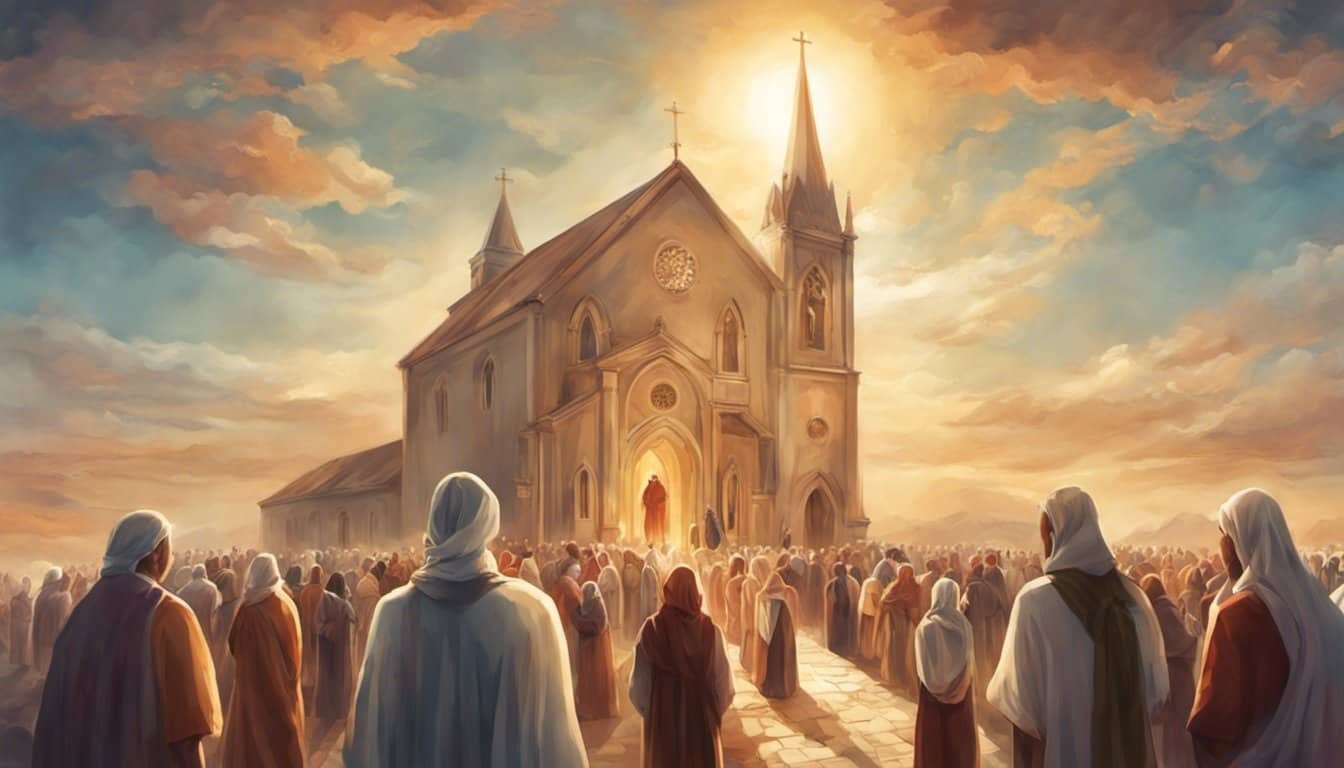
Jesus referred to himself as the First and the Last, who died and came back to life. This reminded them that he understood their suffering and had overcome death.
Warning to Pergamum
Pergamum was praised for holding onto faith in a challenging environment. But they had a serious issue – some followed false teachings that led to immorality.
Jesus urged them to repent. He promised hidden manna and a white stone with a new name to those who overcame. These symbols represented God’s provision and a new identity in Christ.
The warning to Pergamum shows the danger of compromising with worldly values. It’s a reminder to stay true to God’s standards, even when surrounded by opposing influences.
Commendation of Thyatira
Thyatira received praise for their love, faith, service, and perseverance. Jesus noted their recent improvement. But they tolerated a false prophetess who led people into sin.
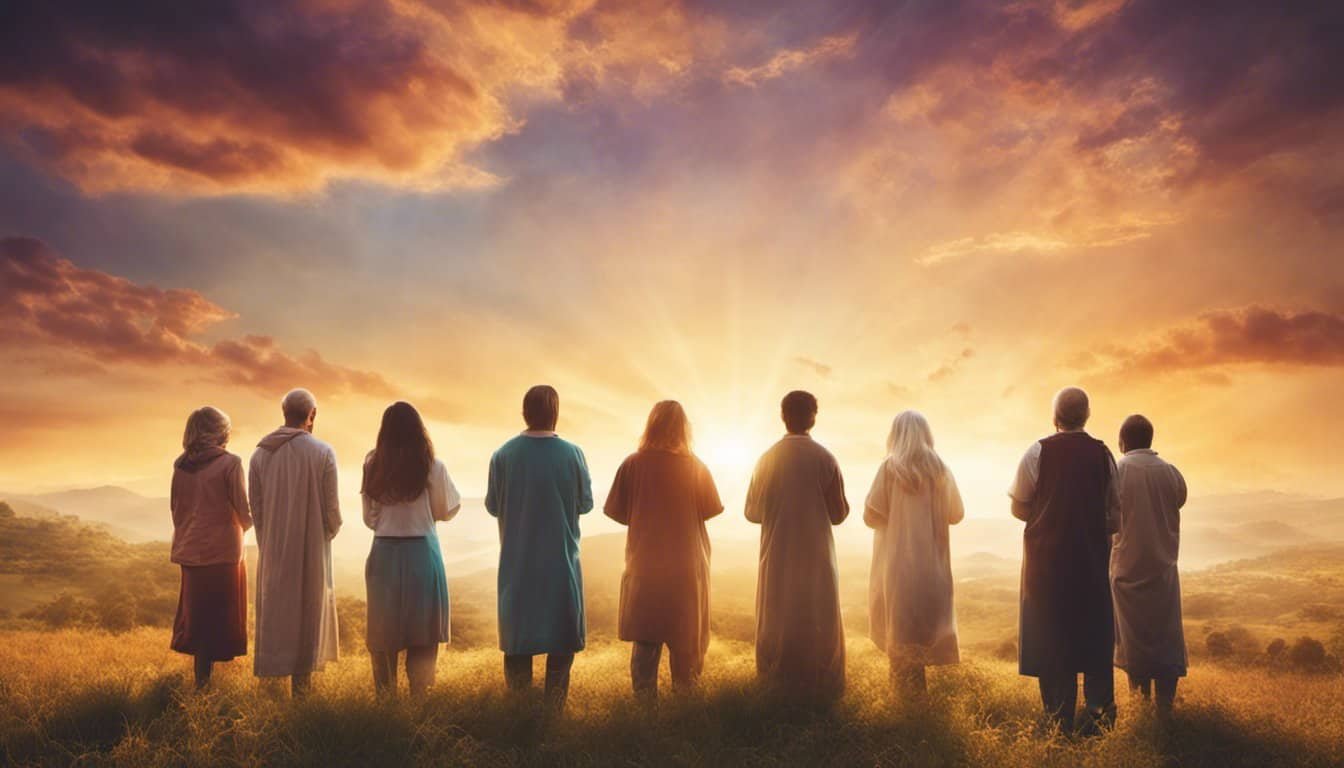
Jesus gave time for repentance. He promised authority over nations to those who stayed faithful. This shows God’s patience, but also his judgment on persistent sin.
The message to Thyatira highlights the importance of discernment. It’s crucial to test teachings against God’s Word and reject what’s false.
Exhortation to Sardis
Sardis had a reputation for being alive, but Jesus said they were spiritually dead. He urged them to wake up and strengthen what remained before it was too late.
Jesus promised that those who overcame would be dressed in white. Their names would stay in the book of life. This shows there’s always hope for spiritual renewal.
The warning to Sardis reminds us not to rely on past achievements or reputation. Ongoing spiritual vitality is crucial.
Promise to Philadelphia
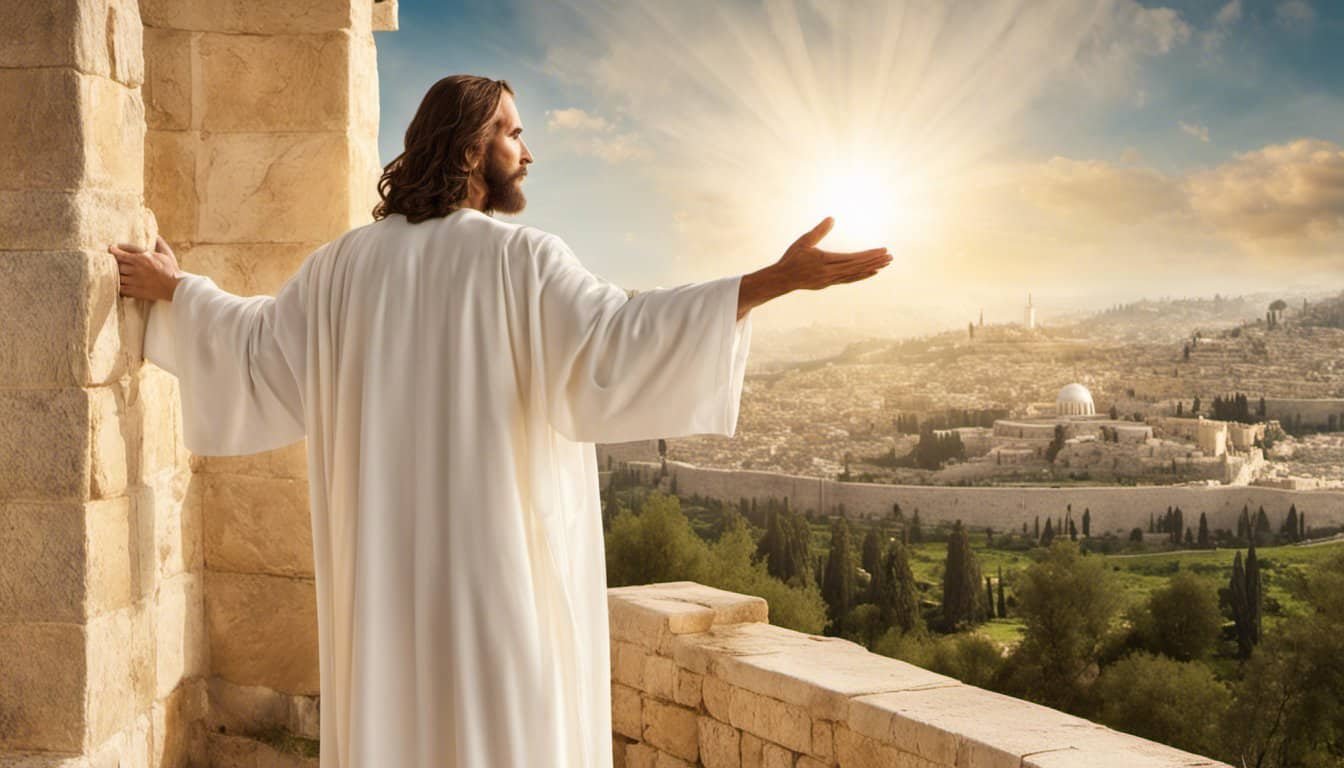
Philadelphia received high praise. Despite having little strength, they had kept God’s word and not denied his name. Jesus promised to keep them from the coming trial.
He also promised to make them pillars in God’s temple. This symbolized a permanent place in God’s presence. The message to Philadelphia shows God’s faithfulness to those who remain loyal to him.
It’s an encouragement that God sees and rewards faithfulness, even when we feel weak.
Rebuke to Laodicea
Laodicea received the harshest rebuke. They were lukewarm – neither hot nor cold. This represented their spiritual apathy. They thought they were rich, but Jesus said they were poor, blind, and naked.
He advised them to buy gold refined in fire, white clothes, and eye salve from him. These symbols represented true spiritual riches, righteousness, and spiritual insight.
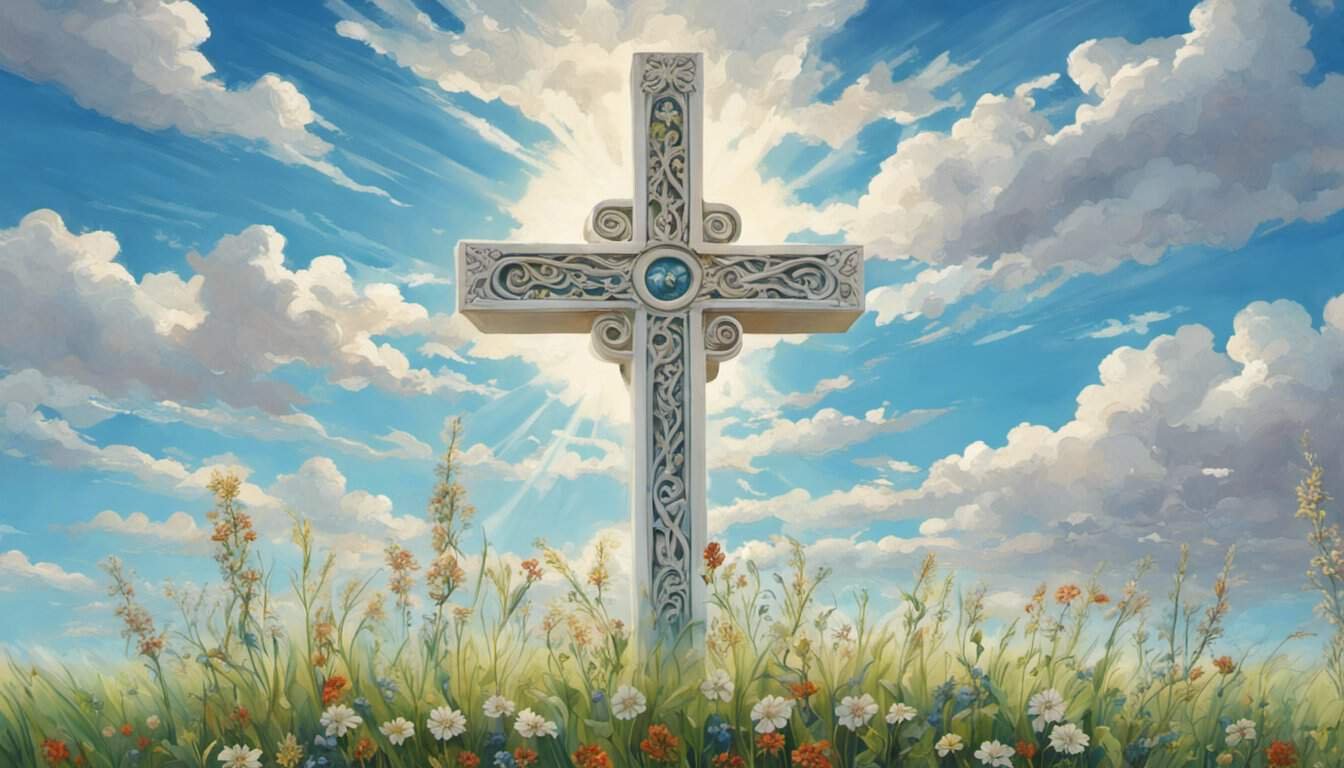
The message to Laodicea warns against spiritual complacency. It’s a call to honest self-evaluation and renewed commitment to Christ.
Visions of Judgment and Redemption
The Book of Revelation shows God’s plan through powerful symbols. These symbols reveal how God will judge evil and save those who follow Him. Let’s look at three key parts of this plan.
Opening the Seven Seals
The Lamb, who stands for Jesus, opens seven sealed scrolls. Each seal brings a new event. The first four seals release four horsemen. They bring war, famine, and death.
The fifth seal shows martyrs asking God for justice. The sixth seal causes a big earthquake. The sun turns black, and the moon becomes like blood.
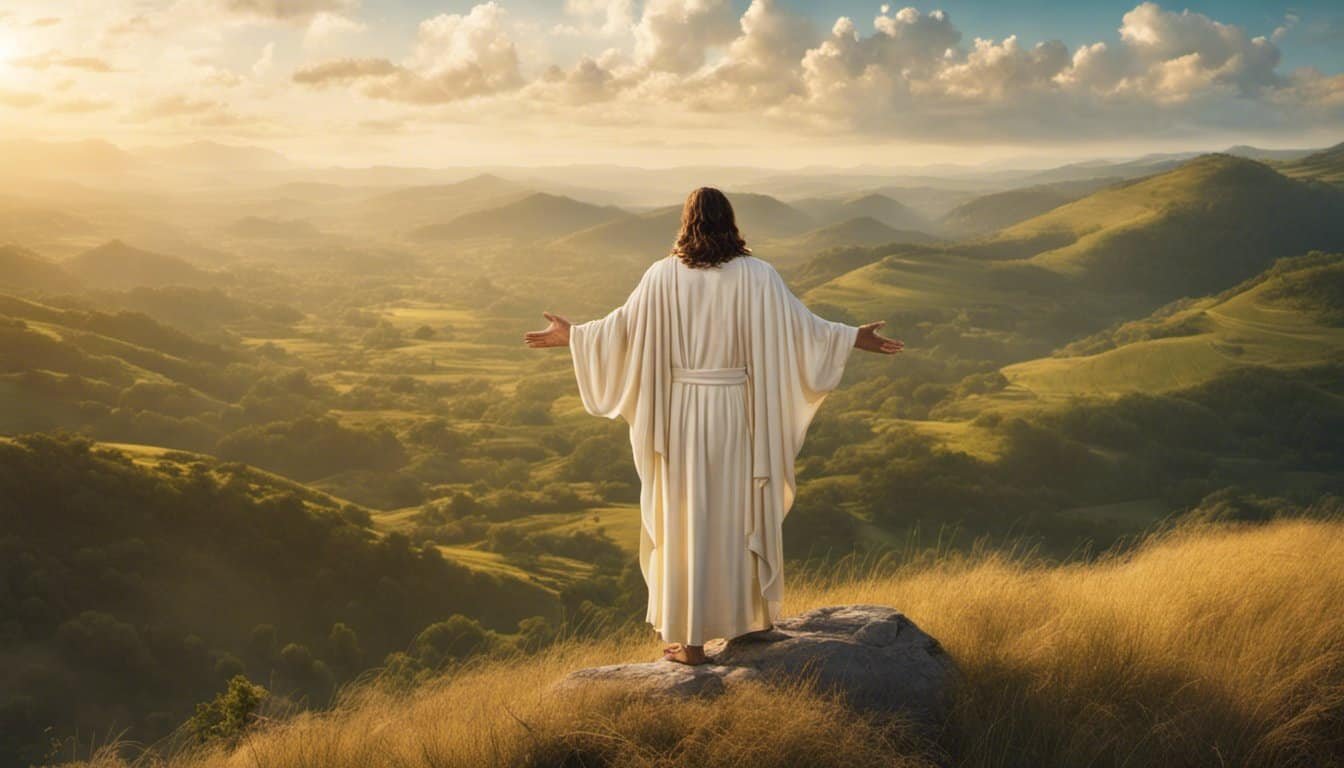
The seventh seal leads to seven trumpets. Before they sound, God marks his faithful people to protect them.
The Sounding of the Seven Trumpets
Angels blow seven trumpets. Each trumpet blast brings a new judgment. The first four affect nature. They harm the earth, seas, rivers, and sky.
The next three trumpets are worse. They’re called “woes.” Scary creatures hurt people who don’t follow God. A huge army causes much destruction.
The seventh trumpet announces God’s final victory. It shows that His kingdom will last forever.
Pouring Out the Seven Bowls
The seven bowls are the last set of judgments. They show God’s anger against evil. Each bowl brings a terrible plague.

These plagues affect the earth, sea, rivers, sun, and air. They cause pain and destruction to those who oppose God.
The last bowl leads to the Battle of Armageddon. This is the final fight between good and evil. In the end, God wins. He defeats all His enemies and brings eternal life to His followers.
Key Figures and Images
The Book of Revelation uses many symbols to tell its story. These symbols are figures and images that stand for big ideas. Let’s look at some of the most important ones.
The Lamb
The Lamb is a symbol for Jesus in Revelation. It shows up a lot in the book. The Lamb looks like it was killed, but it’s alive. This stands for Jesus dying on the cross and coming back to life.
The Lamb has seven horns and seven eyes. These mean the Lamb is very strong and sees everything. In the story, only the Lamb can open a special scroll. This means Jesus is the only one who can make God’s plan happen.
People in heaven sing songs to praise the Lamb. They say the Lamb is worthy to get power and riches. This shows how important Jesus is in God’s plan.
The Beast and Its Mark
The Beast is a scary figure in Revelation. It comes out of the sea and has seven heads and ten horns. This Beast fights against God and his people.
People who follow the Beast get a special mark. It’s called the Mark of the Beast. This mark goes on their right hand or forehead. The mark is the number 666.
Getting this mark means choosing to follow the Beast instead of God. People with the mark can buy and sell things. But those who don’t have it can’t. This shows how the Beast tries to control people.
The Four Horsemen
The Four Horsemen appear when the Lamb opens the first four seals of a scroll. Each horseman has a different color horse and brings something bad to Earth.
Here’s what each horseman stands for:
- White horse: Conquest
- Red horse: War
- Black horse: Famine
- Pale horse: Death
These horsemen show some of the hard times that will happen before the end of the world. They bring trouble to people on Earth.
The 144,000
The 144,000 are a special group of people in Revelation. They come from the twelve tribes of Israel. God puts a seal on their foreheads to protect them.
These people stay faithful to God even when things get hard. They don’t worship the Beast or follow false gods. The 144,000 sing a new song that only they can learn.
Some think this number stands for all of God’s people. Others think it’s a real number of special believers. Either way, it shows God protects those who stay true to him.
The Prophetic Sequence of Events
The Book of Revelation describes a series of events leading to the end times. It uses vivid symbols to show God’s plan for the world’s future.
Chronology of Revelation
Revelation tells about things that will happen before Jesus comes back. The Seven Seals represent divine judgment. When each seal opens, big events happen on Earth.
After the seals, seven trumpets sound. Each trumpet brings a new problem to the world. These events get worse as they go on.
The book also talks about seven bowls of God’s anger. These bring the final judgments on Earth before Jesus returns.
Imagery of the End Times
Revelation uses lots of symbols to show what will happen. It describes a beast with seven heads and ten horns. This may stand for evil governments that will rule.
The book talks about a battle called Armageddon. This is when God defeats evil once and for all.
At the end, there’s a new heaven and new earth. God makes everything new and perfect. The New Jerusalem comes down from heaven as God’s home with his people.
People who believe in Jesus get eternal life in this new world. It’s a happy ending to the story of the world.
Themes and Messages for Today
The Book of Revelation offers timeless wisdom and hope for believers. Its symbols speak to enduring truths about faith, perseverance, and God’s promises.
Calls for Wisdom and Faith
The Book of Revelation emphasizes wisdom and faith as key virtues. It urges readers to seek understanding in difficult times.
Believers are called to stay strong when facing challenges. This may include persecution or suffering for one’s beliefs.
The text encourages trusting in God’s plan, even when it’s hard to see. It reminds us that faith can provide comfort during uncertainty.
The Holy Spirit is portrayed as a guide and source of strength. This divine presence helps believers navigate trials and temptations.
The Promise of Eternal Life
Revelation offers hope through its promise of eternal life. This central theme reassures believers of God’s ultimate victory over evil.
The symbols in Revelation point to God’s final judgment. They show that justice will prevail in the end.
Repentance plays a crucial role in this promise. The book calls for people to turn away from wrongdoing and embrace God’s love.
Eternal life is depicted as a joyful reunion with God. This gives hope to those facing hardship or loss in their earthly lives.
Reflection and Application
The symbols in Revelation still speak to us today. They offer hope and guidance for facing life’s challenges.
Modern Interpretations
People see Revelation’s symbols in new ways now. Some link the four horsemen to current events like war and hunger. Others view the beasts as stand-ins for corrupt leaders or systems.
Many read Revelation as a call to stay strong in hard times. The seven churches remind us to keep our faith even when tested. Believers often see themselves in these ancient words.
Some scholars focus on Revelation’s message of God’s final victory. This view gives comfort to those facing injustice or pain.
Living with Hope and Perseverance
Revelation’s symbols can inspire us to live with purpose. The image of God wiping away all tears gives hope for a better future.
We can face today’s troubles knowing God has a plan. Early Christians trusted in divine protection, and we can do the same.
Revelation teaches us to:
- Stay true to our beliefs
- Help others in need
- Look for signs of good in the world
- Keep hope alive in dark times
These lessons help us grow stronger. They remind us that light can shine even in the darkest places.















